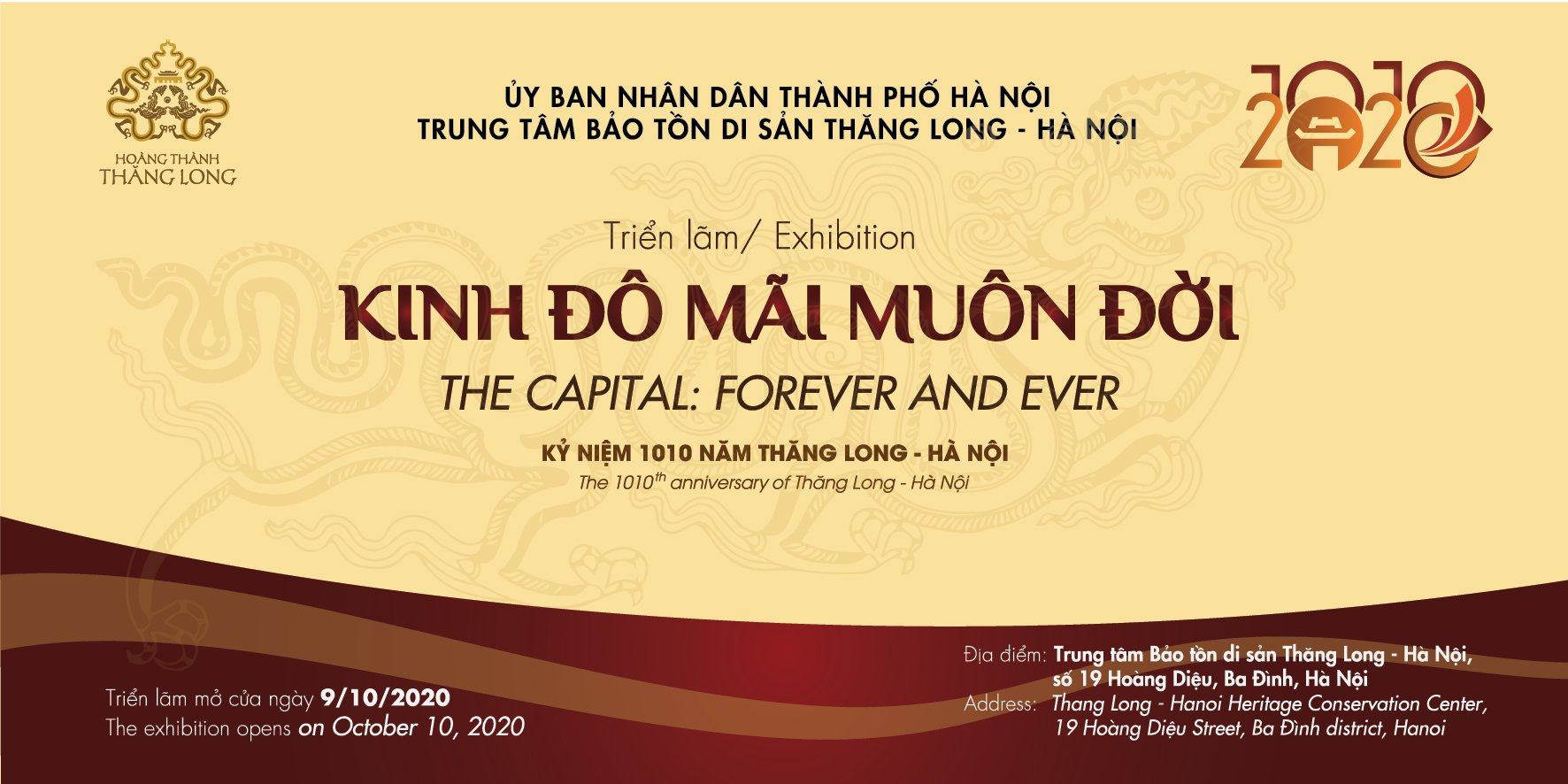Exhibition: “The forever capital” at Hoang Thanh Thang Long
08/10/2020
The 10th anniversary of King Ly Congan moving the capital from Hoa Lu (Ninh Binh) to Dai La, and renamed Thang Long, on October 9 at Hoang Thanh Thang Long Heritage Site, Hanoi, the exhibition “Kinh dollar forever “with over 100 documents in kind.
Moving – Deciding history
After taking the throne, realizing that Hoa Lu’s cramped and narrow land was no longer suitable for a stretching role as the capital of a peaceful country, the first big thing Ly Thai To thought about was moving the capital from China. Lu returned to Dai La citadel.
The capital relocation passport was issued, and my king, with one hand, agreed to move the heavenly capital to Dai La citadel. In July of the original year of Thuan Thien (1010), Ly Thai To started moving the capital to Dai La citadel.
The king’s delegation moved the king’s capital just to Dai La, and the king saw a golden dragon flying into the sky, and decided to name this land Thang Long. Starting from here, Hoang Thanh Thang Long officially became the capital of an independent and unified country.
The exhibition “The forever capital city” highlighting the role of King Ly Cong Uan in the decision to move the capital shows a general picture of Thang Long capital in the Ly dynasty, as well as the historical flow of Thang Long – Hanoi. for 1010 years.

The exhibition consists of 3 themes:
Thread 1:
The exhibition introduces an overview of King Ly Cong Uan (974-1028) – an eminent king in national history, has an important role in the decision to move the capital from Hoa Lu (Ninh Binh) to Dai La ( Thang Long). He was born in the final years of the Dinh, when growing up and held many important positions in the Tien Le court. When King Le Long Dinh died, Ly Cong Uan was crowned corn by the court, founding Ly Dynasty. After taking the throne in Hoa Lu, Ly Thai To made an epochal decision expressing the “Millennium” perception and vision of the country’s pre-development: Move the capital from Hoa Lu to Dai. La.
Thread 2:
The exhibition introduces outstanding features of “Thang Long Capital”. Accordingly, after moving the capital from Hoa Lu to Thang Long, King Ly Cong Uan and the Ly dynasty embarked on building a new capital of Dai Co Viet country (after 1054, Dai Viet). The appearance of the new capital was shaped with the focus on the palace system in the Forbidden City (Long Thanh) serving the dynasty, with the Can Nguyen Palace in the center. In addition, the Ly dynasty built the walls of the citadel in the style of three overlapping citadels; Many systems of spiritual works were built in Thang Long. Almost throughout the history of the monarchy of Vietnam, following the Ly dynasty, chose Thang Long as the capital of the country. The highlight of this theme is the content recreating the journey to move the capital across the rivers from Hoa Lu to Thang Long by King Ly Cong Uan and the Ly dynasty in 1010. The course begins: from the Inner citadel. At Hoa Lu, follow Sao Khe river, Hoang Long river, then Hoang Long river up north and into Day river at Gian Khau junction (Ha Nam), from Day river, boat of King Ly Thai To to Chau River (Ha Nam), then from Chau River back to Red River, along Red River to Dai La citadel.
Thread 3:
“Hanoi Capital” is the final theme of the exhibition. Visiting the content on display, visitors have a deeper understanding of Hanoi capital of thousands of years of culture. An important milestone when the August Revolution of 1945 was successful, Hanoi was chosen by President Ho Chi Minh and the first National Assembly of the Democratic Republic of Vietnam as the Capital of the Independent Vietnam. Maintaining the spirit of patriotism, love for peace, solidarity and rising aspirations, Hanoi pioneered, and with the country overcame the difficult years of the war, successfully completed the cause of national liberation. From 1946 to 1947, Hanoi “Decided to die for the Fatherland to decide the birth”; In 1954, the vanguards of the Capital Regiment moved to take over the Capital. From here, Hanoi and the North became a major rear to support the large Southern frontline for the purpose of liberating the South and unifying the country. 1972, Hanoi – 12 days and nights of Dien Bien Phu in the air. In 1975, Hanoi and the country rejoiced in the joy of reunification. Since 1976, Hanoi has been the Capital of the independent and unified Socialist Republic of Vietnam.
The exhibition will be opened: 9:00, Friday, October 9, 2020
Sincerely invite visitors to visit Hoang Thanh Thang Long Heritage Site and Exhibition: “The forever capital”.
RELATED ARTICLES
HERITAGES OF VIETNAM